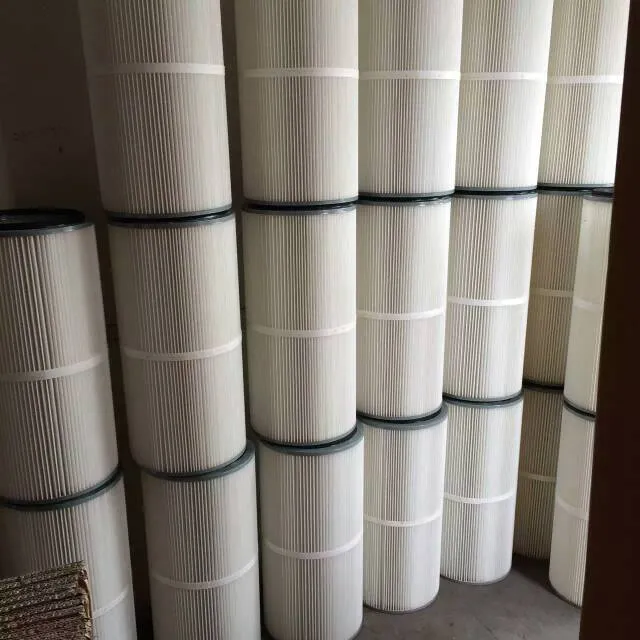 Tel:
+8615930870079
Tel:
+8615930870079
дец . 15, 2024 08:52 Back to list
antistatic filter element
Antistatic Filter Element Importance and Applications
In various industries, the interaction between static electricity and particulate matter can lead to significant challenges, especially in sensitive environments such as cleanrooms, laboratories, and manufacturing facilities. One effective solution to mitigate these challenges is the use of antistatic filter elements. These specialized filters play a crucial role in maintaining the air quality and safety standards required in such environments. This article will explore the importance, functionality, and applications of antistatic filter elements.
What Are Antistatic Filter Elements?
Antistatic filter elements are designed to prevent the accumulation of static electricity that can attract dust, dirt, and other airborne particles. These filters are embedded with conductive materials that dissipate static charges, preventing the build-up of electrostatic fields. As a result, they help in reducing the risk of dust-related contamination and improve the efficiency of air filtration systems.
Importance of Antistatic Filter Elements
1. Contamination Control In industries like pharmaceuticals, microelectronics, and food processing, even the smallest particulate matter can lead to serious contamination issues. Antistatic filter elements help to control such contamination by trapping and neutralizing dust particles, ensuring a clean and safe working environment.
2. Enhanced Safety Static electricity can pose a safety hazard in environments where flammable materials are present. By dissipating static charges, antistatic filter elements minimize the risk of sparks and fires, protecting both personnel and facilities.
3. Operational Efficiency The presence of static charge can lead to clumping of particles, which may cause blockages in filtration systems. Antistatic filters enhance operational efficiency by maintaining even airflow and prolonging the lifespan of the filter itself, which reduces maintenance costs.
4. Compliance with Standards Many industries are subject to stringent regulations regarding air quality and contamination control. Utilizing antistatic filter elements helps organizations comply with these regulations, thereby avoiding costly penalties and ensuring product quality.
How Do Antistatic Filter Elements Work?
antistatic filter element

Antistatic filter elements often use materials such as carbon, conductive polymers, or metal threads woven into the filter media. These materials allow electric charges to disperse without accumulating on the surface of the filter. The process involves two key mechanisms
- Charge Dissipation The conductive materials allow accumulated charges to flow away, thus neutralizing any static buildup. - Particle Capture Simultaneously, these filters effectively capture particles as air passes through them, maintaining both filtration efficiency and charge neutrality.
Applications of Antistatic Filter Elements
1. Cleanrooms In semiconductor manufacturing, aerospace, and pharmaceutical sectors, maintaining a cleanroom environment is critical. Antistatic filter elements are integral to HVAC systems in such facilities, ensuring particle-free air.
2. Electronics Manufacturing The electronics industry requires environments free from static shock, which can damage sensitive components. Antistatic filters are vital in cleanroom air systems where electronic components are assembled and tested.
3. Food Processing In food and beverage industries, preventing contamination from dust particles is essential. Antistatic filters help maintain hygiene by capturing airborne contaminants while protecting against static-related risks.
4. Chemical Plants Many chemicals are flammable or sensitive to static charges. Using antistatic filter elements can help in reducing fire hazards by managing static electricity in processing and storage facilities.
Conclusion
Antistatic filter elements are essential tools in various industries where air quality and safety play a pivotal role. By combating static electricity and particulate matter, these filters not only enhance operational efficiency but also ensure compliance with industry standards and regulations. As industries continue to evolve and face new challenges, the importance of antistatic filter elements will undoubtedly grow, making them indispensable in maintaining a clean and safe working environment.
-
Nano Fiber Technology: Revolutionizing Cartridge Dust Collector FiltersNewsAug.06,2025
-
How Activated Carbon Air Cartridges Eliminate OdorsNewsAug.06,2025
-
Dust Filter Cartridge Handling Fine Particulate MatterNewsAug.06,2025
-
Cartridge Dust Collector Filter for Welding Fume ExtractionNewsAug.06,2025
-
Activated Carbon Filter Cartridge Effectiveness Against VOCsNewsAug.06,2025
-
Activated Carbon Air Filter Cartridge Benefits ExplainedNewsAug.06,2025

 Email:
Email:





